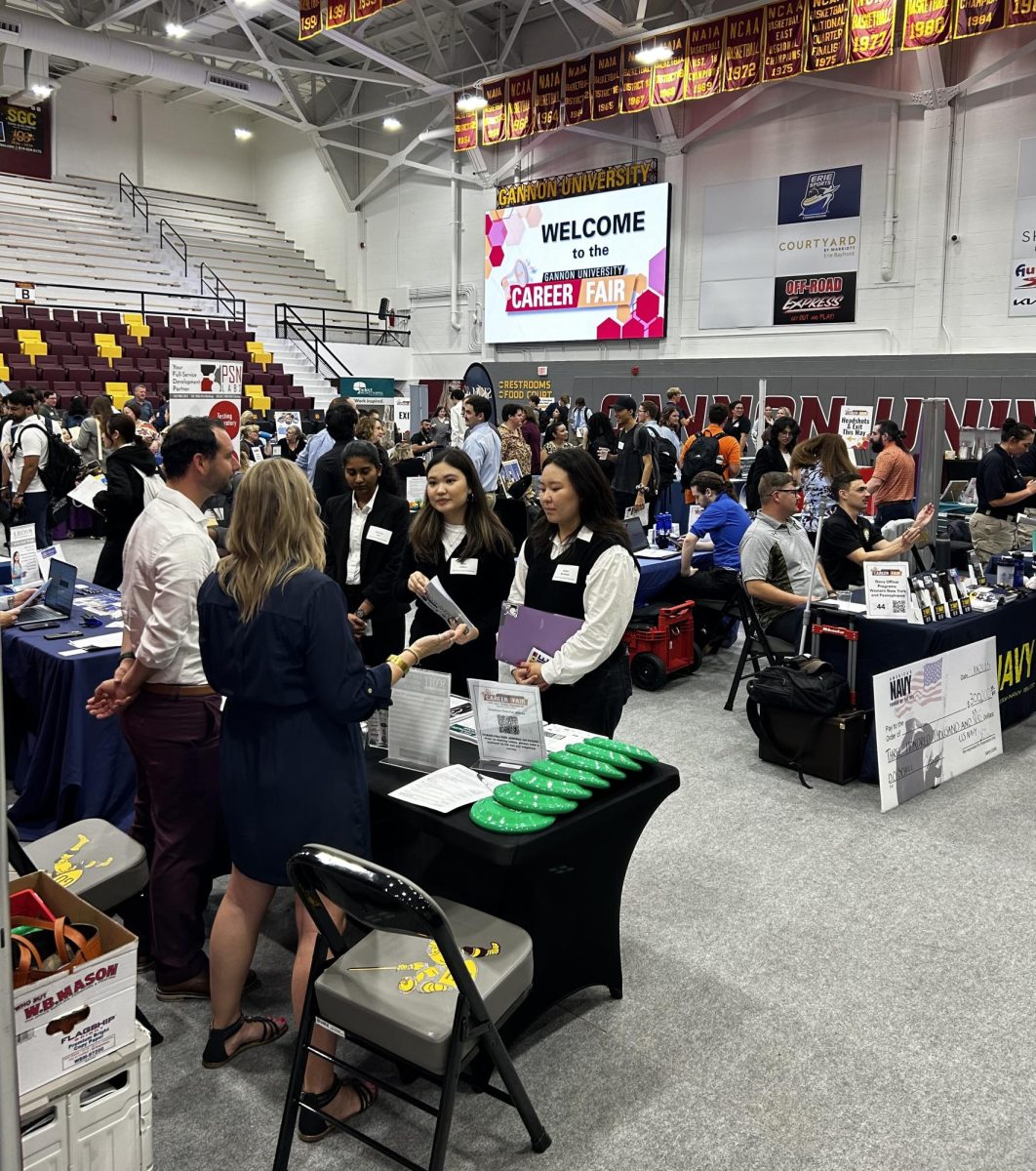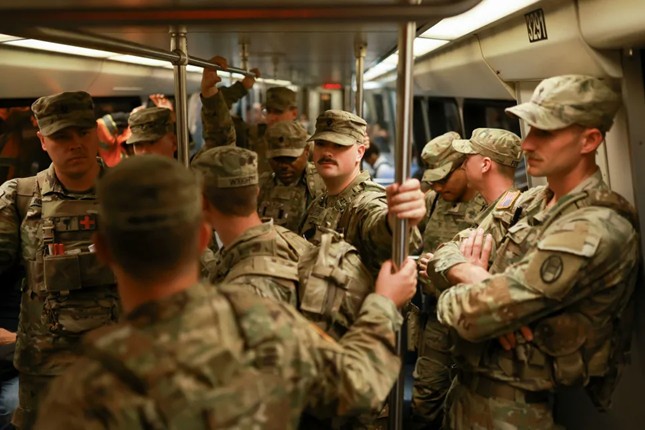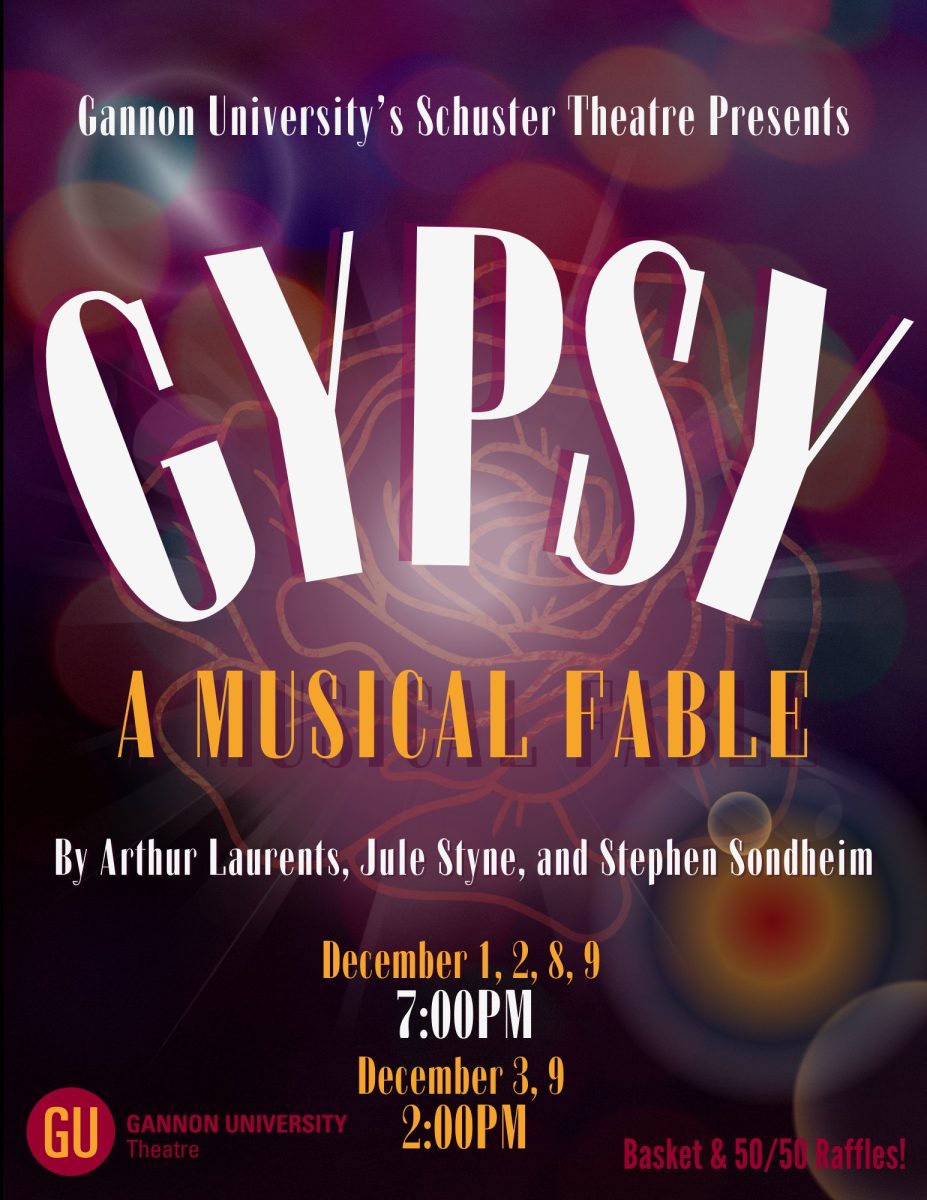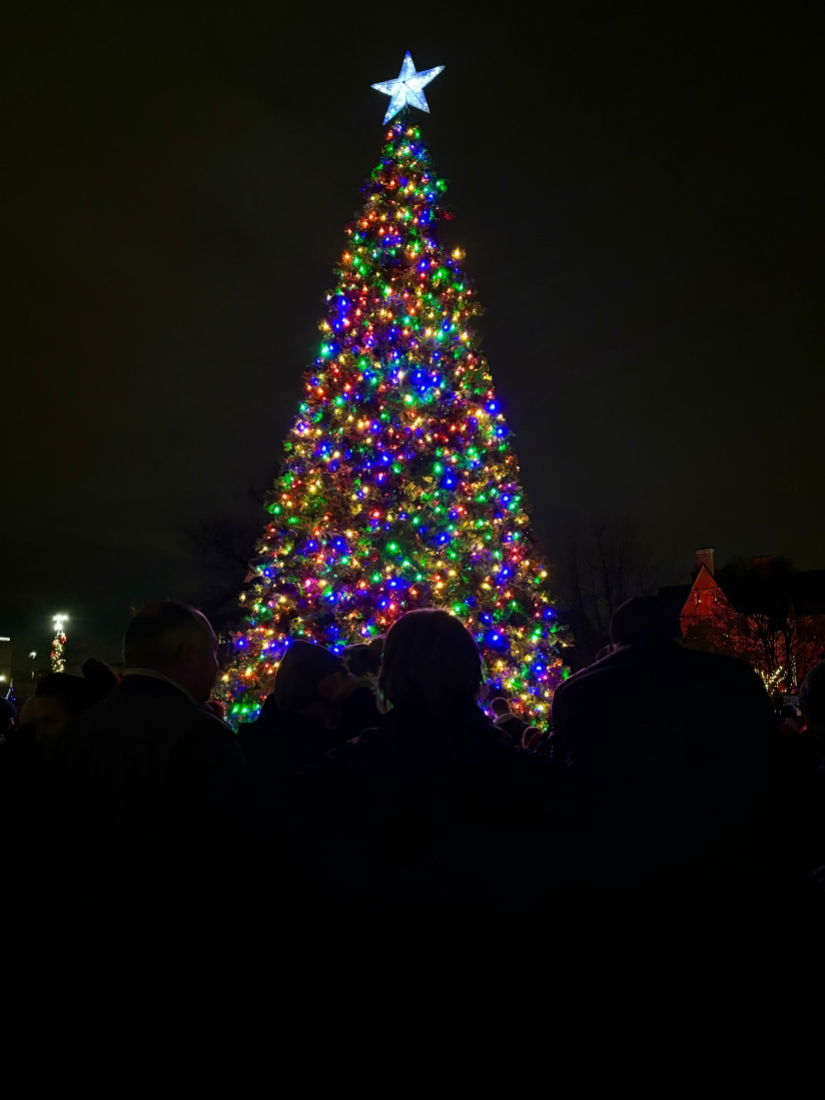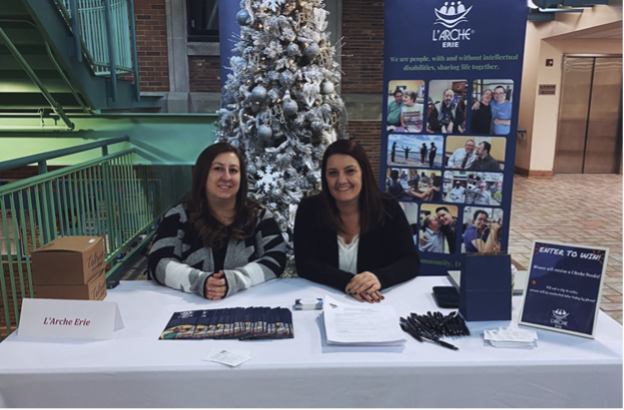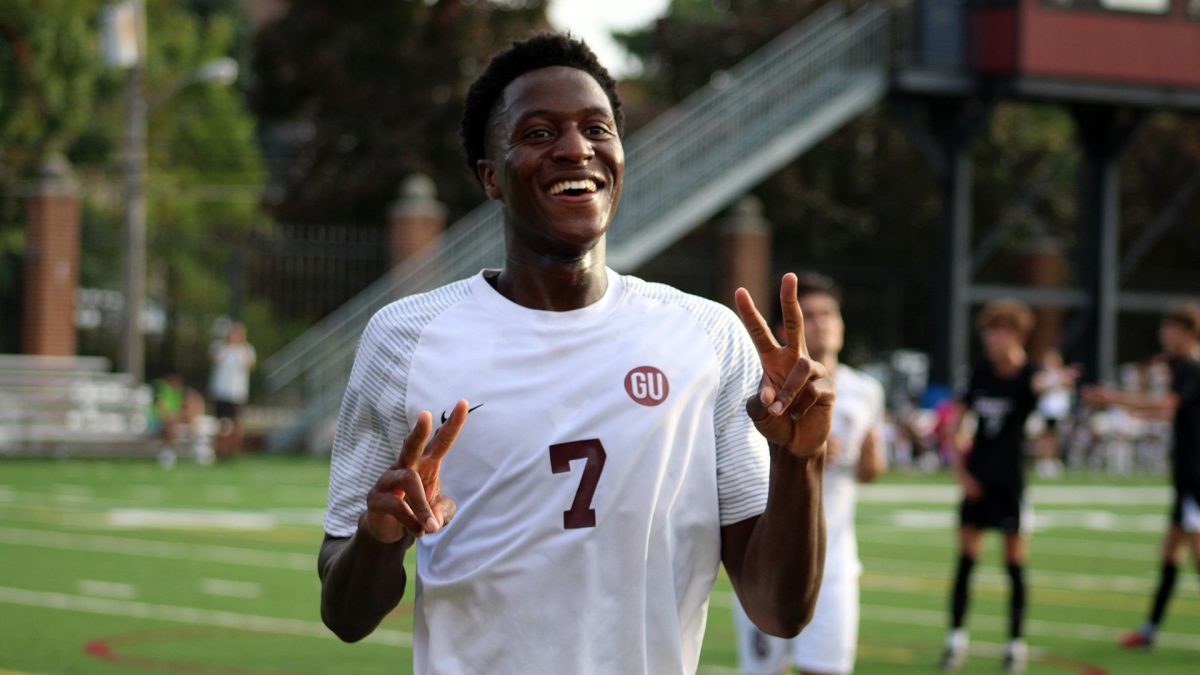While most students were heading home or catching a flight to Florida for spring break, Gannon University’s Model UN Group participated at the Pennsylvania United Nations Conference at Penn State University Park. The event spanned for four days, from Feb. 27 until March 2. The theme of this year’s conference was “Diplomacy Through Time and Space.”
Five Gannon students went to the conference: Jennifer Amann and Jared Wilczynski, who represented Japan in the Historical Security Council in 1975; Jared Schaaf, a delegate in the committee for Paradise Lost; Ian Van Dyke, who represented the Secretary of Labor in Nixon’s Cabinet from Vietnam to Watergate; and Samar Shaba, who represented her home country of Iraq in the International Atomic Energy Agency (IAEA). Anjali Sahay, Ph.D., an assistant professor in the political science program and Model UN adviser, accompanied the students to the conference.
According to Van Dyke, a senior history major, the Penn State Model UN conference was a crisis conference, meaning that different committees deal with some sort of international or national crises. Some crises arebased on real historical events and others can be completely fictitious.
Van Dyke said the conference brought together several hundred students from across the U.S. and Canada. In his committee, Van Dyke said students came from universities in Pennsylvania, New York, Ohio and Montreal.
Gannon students experienced the conference much differently than usual; the PUNC marks the first conference that Gannon students merely attended and did not host.
According to Amann, a junior political science and history major, the experience with the conference was very experimental. She said the main difference between the conference Gannon holds every fall and the conference the group attended is that the PUNC is run only with crisis committees.
Amann said that students have to be up-to-date with news and information on the subject if they are attending or hosting. Whereas, if students are just attending, participants are required to know more information about a specific country and to imagine they are delegates from that country, working in the United Nations.
“Committee topics are not limited to specific international issues,” Amann said. “While it is expected that delegates represent their country’s best interest publicly in committee and work on legislation, most of the work is done secretly through back channels using ‘crisis notes’ to the committee staff.”
Unlike the PUNC, the conference Gannon holds is a simulation for high school students. Several General Assembly committees are present, which focus on a particular topic that is relevant to international affairs, along with an Economic and Social Council (ECOSOC) committee, a Security Council and a Historical Security Council, according to Amann. Gannon will host its 62nd Model UN Conference in the fall, according to Sahay.
Amann also said that high school students represent their assigned countries within those committees with the goal of writing and passing resolutions to solve real-world problems.
Van Dyke said that the conference was not only informative, but fun as well and at one instance, the conference involved something bigger than debating.
“Near the end of our committee, the White House chief of staff was implicated in criminal activities and a number of other cabinet members created a plan to take him out,” Van Dyke said. During our deliberations, the Crisis Team (the Penn State students in charge of running our committee) stormed into the room, turned off the lights, put a bucket over the chief of staff’s head and ‘abducted’ him from the room. We were then informed that his body was found dumped in a national park. The student who previously represented the chief of staff was ‘resurrected’ as the secretary of agriculture.
“It probably sounds silly, but that kind of stuff is what made the conference fun and interesting — otherwise, it would just be a bunch of history nerds debating in a room for eight hours a day.”
Amann and Wilczynski, a freshman pre-medical biology major and assistant secretary general for Model UN, both agreed that attending the conference was beneficial for all.
“It was very exciting for all of us to be able to take part in the first competition that Gannon’s Model UN program has attended,” Amann said. “We were able to walk away from the PUNC with a better knowledge of college Model UN competition and crisis style committees.”
Amann and Wilczynski both said they hope to use these experiences while competing in the future.
Sahay said that the importance of conferences like the PUNC is immense for students.
“[Students] need to apply the knowledge in simulation and role playing and focus on experiential education, not only theoretical knowledge,” Sahay said. “Attendance at a Model UN conference immediately gives them a global worldview.”
If any student is interested in joining Model UN, membership is open throughout the year. They can directly contact Amann ([email protected]), Wilczynski ([email protected]) or Sahay ([email protected]) to get involved.
The club is very active in the fall semester due to its hosting of the Model UN Conference at Gannon. Model UN meets every week on Tuesdays from 11 a.m. – noon.
SAMMIE JANIK




